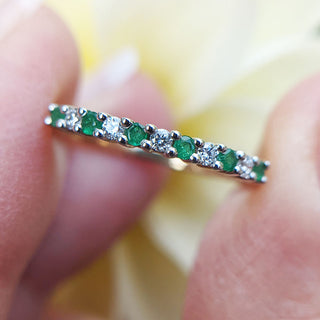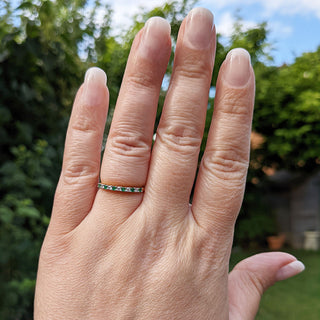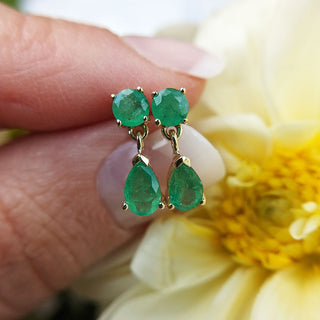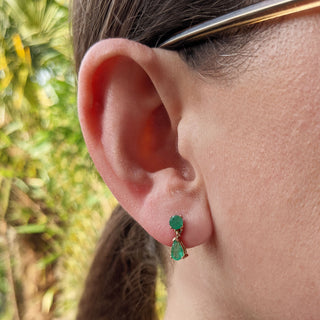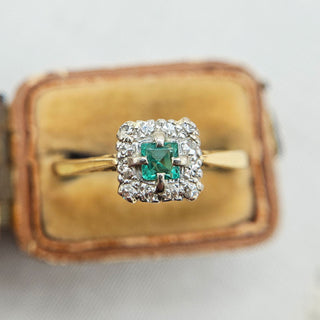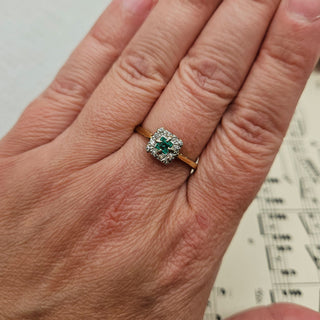About Emerald
Emerald is a gemstone that has captivated humans since ancient times. It is a member of the beryl mineral family, which consists of beryllium aluminium cyclosilicate. Other notable gemstone varieties within this family include aquamarine (blue-green), morganite (pink), and heliodor (yellow).
Colour: Emerald is renowned for its rich green color, which ranges from a vibrant, intense green to a more subdued, pale green. This captivating hue is primarily attributed to trace amounts of chromium and vanadium within the crystal structure.
Inclusions: Emeralds are often characterized by the presence of inclusions, which are internal imperfections within the gemstone. These inclusions are typically referred to as "jardin," the French word for "garden," due to their appearance resembling foliage or moss-like patterns. While some inclusions are tolerated in emeralds and can even be considered a part of their character, high-quality emeralds are valued for their transparency and minimal inclusions, as these traits enhance the gem's overall beauty and rarity.
Hardness: Emerald's are brittle gemstones that are routinely filled with oil to cover fractures, making them far more prone to damage than some other gemstones. Care must be taken at all times when wearing emeralds, they must be protected from knocks and heat and they must never been put in a jewellery cleaning machine. Protective settings in rings are often recommended to safeguard these precious gems.
Lustre: Emerald typically exhibits a vitreous to sub-vitreous lustre, contributing to its radiant appearance when expertly cut and polished.
History: The history of emerald spans millennia, with records of its use dating back to ancient Egypt, where it was associated with fertility and rebirth. It has been treasured by various cultures and civilizations, symbolizing love, rebirth, and protection throughout history.
Locations/Deposits/Geology: Prominent emerald deposits are found in several countries, including Colombia, Zambia, Brazil, and Zimbabwe. The formation of emerald is associated with hydrothermal and metamorphic processes, often occurring in conjunction with geological events involving tectonic plate movements.
Common Treatments: Traditional treatments for emeralds involve oiling or resin-filling fractures to improve clarity and appearance. Such treatments are widely accepted and have been practiced for centuries to enhance the gem's visual appeal. Oiling is one of the reasons emerald must be kept away from heart and jewellery cleaning machines - the stone will look very different if the oil is accidentally removed!
Synthetic Versions: Synthetic emeralds are produced using various methods, including the hydrothermal and flux-growth processes. These lab-grown emeralds possess the same chemical composition as natural emeralds but lack their inherent rarity and value.
Value: The value of emeralds is primarily determined by their color, clarity, size, and overall quality. The most valuable emeralds exhibit a vivid green color with high transparency and minimal inclusions. Large, top-quality emeralds are exceptionally rare and can command significant prices in the market.
Common Jewellery Applications: Emeralds are a cherished choice for various jewellery pieces, including engagement and eternity rings, necklaces, earrings, and pendants. Their lush green color and historical significance make them a favored gemstone though even small stones can be expensive, making emerald jewellery an indulgent choice.
Birthstone: Emerald serves as the birthstone for the month of May, symbolizing renewal, love, and harmony. It is often given as a meaningful gift for individuals born during this month.
Meanings: Beyond its aesthetic appeal, emerald is associated with qualities such as love, rebirth, and protection. It is believed to bring emotional healing, enhance intuition, and foster growth and vitality in its wearer.
In summary, emerald's deep green hues, historical significance, and metaphysical attributes have established it as one of the world's most treasured gemstones. Whether as a symbol of love in an engagement ring or an expression of elegance in a pendant, emerald continues to evoke a sense of beauty and mystique in those who appreciate its timeless allure.



